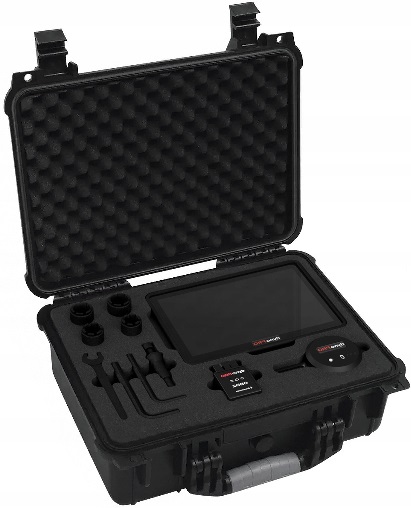DYNOPRO – The road test bench for experts
With DYNOPRO we present a mobile test bench that is used to measure power (HP), torque (NM), acceleration (seconds) of motor vehicles with combustion engines or electric motors. Measurements can be carried out for vehicles with different drive types. It doesn't matter whether you're measuring 2WD in front or rear drive or all-wheel drive with permanent or on-demand traction control. This dynamic test bench was developed specifically for use in motorsports.
Overview:
The device is characterized by a handy housing made of an aluminum-plastic combination. Installation only takes about 5 minutes, after which the device is ready for measurements.
The vehicle weight and tire size are required, although manual tire measurements are not necessary as the program can calculate these automatically. The device also has an integrated weather station that measures temperatures and air pressure and always applies corrections to the measurement (-5°C to +40°C).
Communication between the tablet, DynoPro and the OBD2 interface takes place via Bluetooth. The DynoPro is equipped with a built-in battery (1000mAh), which allows an operating time of around 7-10 hours, depending on the temperature and number of measurements.
In addition to standard performance measurement, the device offers the ability to record additional parameters such as boost pressure, injection line pressure, exhaust gas temperature, etc. and display them graphically in relation to the power or torque diagram. All values that can be selected are subject to the EOBD standard and are limited to the engine control. The EOBD standard also makes the following features possible: identification of the engine control and the diagnostic protocol, reading and deleting DTC errors (P codes), measuring actual values according to EOBD PIDs.
The measurement results are presented in three variants: real mileage as daily performance, DIN standard, EWG standard. Thanks to the precise measuring method, an error rate in the measurement remains at ~1%.
